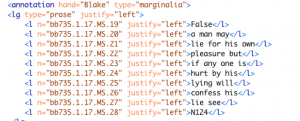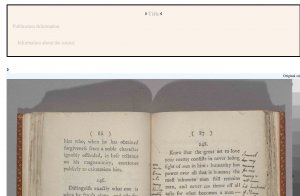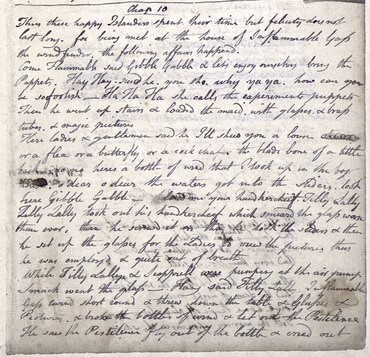Seven months ago I wrote a blog titled “Some Promising Forays into Transcribing Blake’s Marginalia.” Much has changed!
After months of grappling with the logistical and philosophical challenges involved in marginalia transcription, we now have what we think will be the actual marginalia tag-set moving forward (though to be sure, there are a few questions we’re saving for Blake Camp).
As a follow up to the “Promising Forays” I want to provide a brief quasi-narrative description of how we got from point A to point B.
When I blogged in July we had settled upon <annotation> as an all-purpose indicator that what is transcribed inside is Blake’s writing. Everything not inside the <annotation> tags was by default Lavater (or whomever Blake was annotating). The main attribute of <annotation> was “type” which was usually “underline” or “marginalia.”

The other thing we were considering at the time was the use of <zone>. The main advantage to <zone> was that it would allow us to partition off an entire paragraph or clump of Blake text from the Lavater text. Without zones, almost every line of Blake would have to be within a line of Lavater. This wasn’t always visually accurate and it chopped up Blake’s annotations to spread them across several Lavater lines. With zones, you can partition off the entire left margin and transcribe the Blake comment in that margin as its own line group uninterrupted by stretches of Lavater. We didn’t know exactly how we were going to use zones, but we knew we liked them.

So then what happened?
To avoid verbosity, I’ll limit the description to a list of what seem to me the four most significant changes.
- <layer></layer>: This was the decisive turn in development of our schema. While in the earlier schema <annotation> could separate Blake’s writing from Lavater’s within a given line, and <zone> could move clumps or paragraphs of Blake into their own line groups separate from Lavater’s text, <layer> made the separation of Blake from Lavater total. The way we would encode now was to transcribe all of Lavater in one <layer> and then all of Blake in a second <layer>.
- Dispensing with “marginalia” as an attribute: Whether or not something was in the “margin” no longer seemed like a necessary distinction.
- Elaboration of <zone>: In August there was probably nothing we discussed more than how we were going to use <zone>. At one point we considered a system where each page would have five zones; body, top, bottom, left and right. We ultimately moved toward a more flexible system of deciding where to draw them on a page by page basis. We use a plug-in we have for Oxygen to upload an image of the object from which we can derive coordinates defining the zone’s parameters.

- Underlining: I think it was Oishani and Allison who came up with the idea for how to indicate underlined text. In the Blake layer we use <hi rend= “underline”></hi> with a <gap extent= “7”> inside to indicate the length of the line drawn under the text. This solves the conceptual issue that plagued our former approach. That system involved putting the underlined Lavater text inside of <annotation> which otherwise indicated Blake’s writing and markings. This new system actually allows us to keep Lavater’s words and Blake’s line under them in their respective places.

What I’m seeing now that I look back on it all is that the general transformation is from a schema firmly centered around the typographical text (with lines of typographical text and the margins surrounding that type as the key structural units) to one that better allows for the fluidity of Blake’s annotations. This is probably how it should be. It is the William Blake Archive after all!



